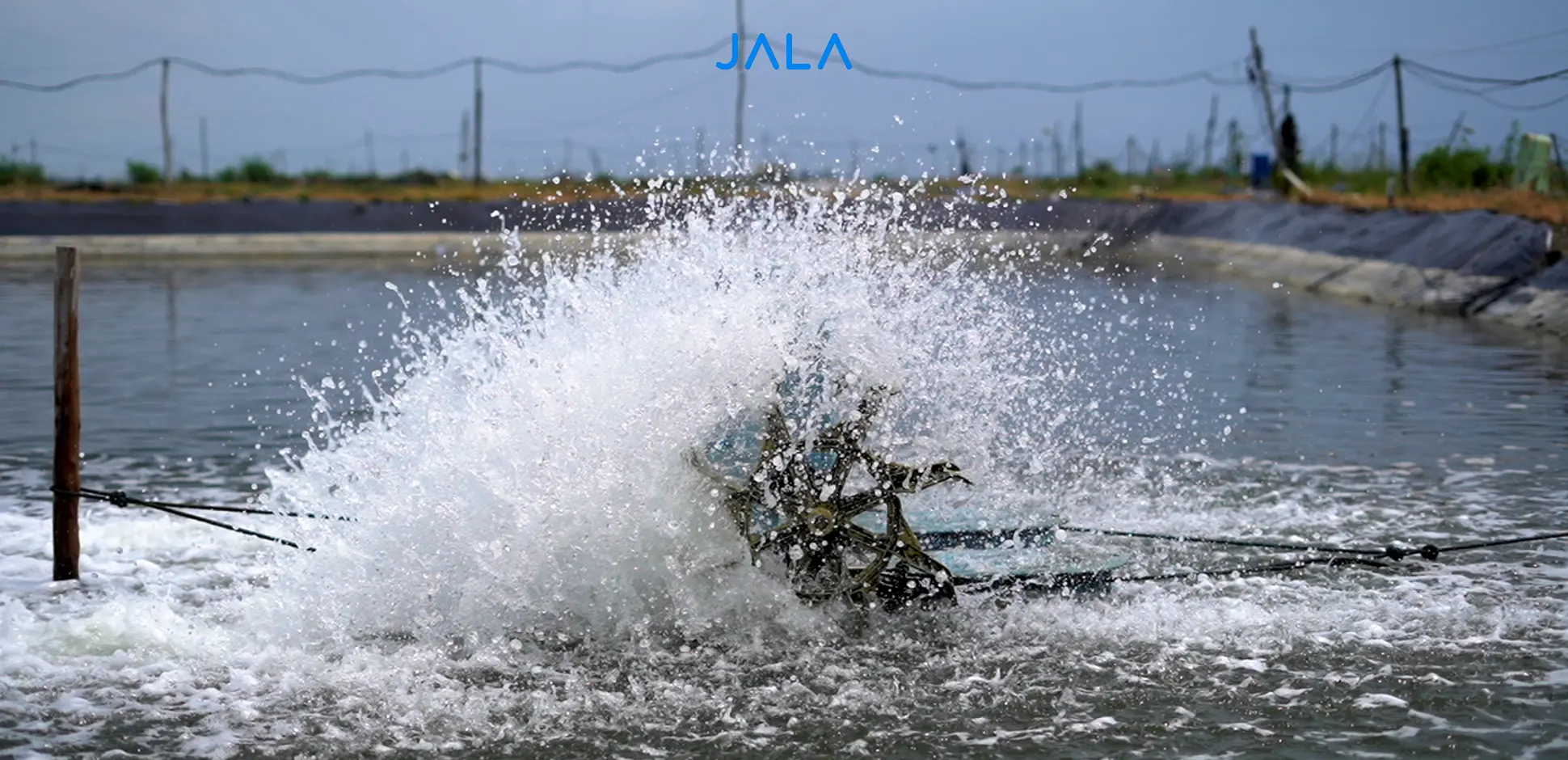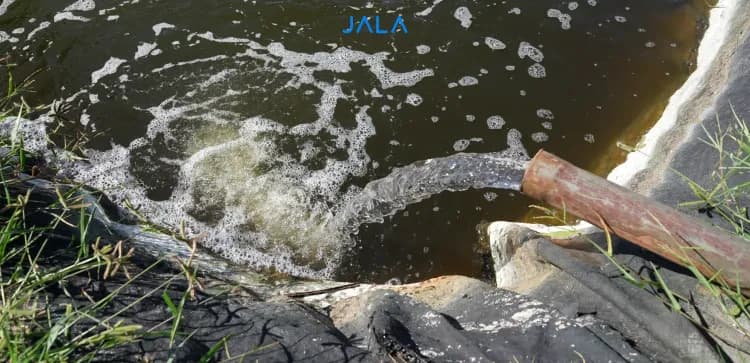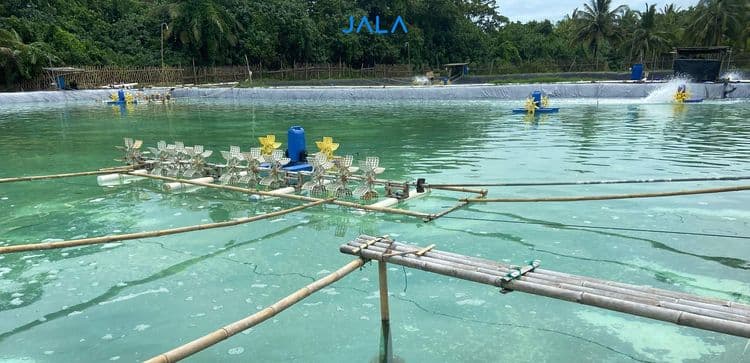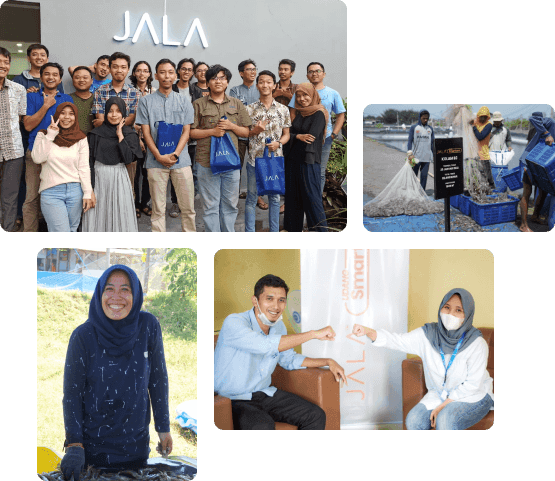
One of the most significant aspects of shrimp farming is the monitoring of water quality. There are several parameters that need to be maintained to ensure that the quality of shrimp pond water remains ideal, one of which is salinity.
Although vannamei shrimp can live in a wide range of salinity levels, an overly high or low salinity can cause losses in cultivation as it disrupts shrimp growth. What are the factors that affect the change of salinity lvel in shrimp ponds? How to overcome these factors? Check out the complete guide below!
What is shrimp pond salinity?
Salinity is the level of mineral salts dissolved in water. In order for shrimp to grow, the pond must have ideal salinity levels. According to Suriawan and Soermadjati (2007), vannamei shrimp can grow well or optimally at the salinity of 15-25 ppt, they can even still grow at 5 ppt. Salinity levels that go over or under the threshold can cause stress or even death to shrimp.
Changes of salinity level in shrimp ponds need to be a concern even when shrimp are still at the fry or postlarval stage. Thus, farmers should routinely monitor their farm salinity to anticipate unwanted changes.
Read more: How to Maintain the Water Quality of Vannamei Shrimp Ponds: Use JALA Baruno!
Factor that affects the salinity level of shrimp ponds
1. Water evaporation
The evaporation of water due to hot weather is one of the factors that can change the salinity of shrimp ponds. Although evaporation reduces the water volume in the ponds, it does not cause the salts to evaporate along with it, thus increasing salinity. The size of the pond area also affects the rate of evaporation. The larger the pond, the faster evaporation can occur.
2. Rainwater
Rain can cause vannamei shrimp pond salinity to decrease as it has low salt content and pH. Rainwater also has a lower density than pond water, causing it to stay on the pond surface.
How to increase pond water salinity

1. Adding seawater
Low salinity in shrimp ponds can be tackled by adding water with high salinity levels or seawater. Conduct salinity checks until the value matches the desired salinity. Add the seawater gradually to avoid a drastic change in salinity, which may cause stress in shrimp. Also, ensure the water has been sterilized in the water tank to minimize pathogen entry to the farm.
2. Discarding surface water
This is especially crucial when it rains. Freshwater and rainwater have a lower density compared to saltwater, so they will be on the surface of the pond. Therefore, farmers can also maintain salinity by discarding the water on the surface of the pond, which is essential during rainy periods.
How to decrease pond water salinity: adding freshwater
Freshwater with zero salinity (0 ppt) can be added to the pond to reduce salinity to the desired level. If the increase in salinity is due to evaporation, add water according to the amount lost due to evaporation.
Read more: Various Methods to Measure Water Quality in Shrimp Ponds
For example, if the water in the pond is reduced by 5 cm in a day, farmers can add freshwater equivalent to the volume of water that has evaporated.
Conclusion
Salinity is one of the water quality parameters farmers should pay attention to as it affects shrimp growth in the farm. Salinity can change due to evaporation or rain. To increase salinity, farmers can add seawater or discard surface water. To reduce salinity, add freshwater.
Apart from regularly measuring and recording salinity values, farmers also need to check other cultivation parameters, in which JALA App comes in handy to ensure cultivation success. With JALA App, you can record, monitor, and understand cultivation conditions more thoroughly and conveniently. Register yourself on app.jala.tech and download the mobile version on Google Play Store or App Store to start your cultivation journey with JALA!
Reference
Soemardjati, W and Suriawan, A. 2007. Petunjuk Teknis Budidaya Udang Vannamei Litopenaeus vannamei di Tambak. Ministry of Marine Affairs and Fisheries, Directorate General of Aquaculture. Brackish Water Cultivation Center of Situbondo. Page 12-16.
About the Author
The author of this article is Akbar Wirasatya. Akbar is from Probolinggo, East Java, and is a graduate of the Aquaculture Study Program, Faculty of Fisheries and Marine Affairs, Lambung Mangkurat University. Akbar currently works as a Field Assistant at JALA.





